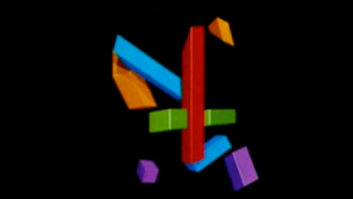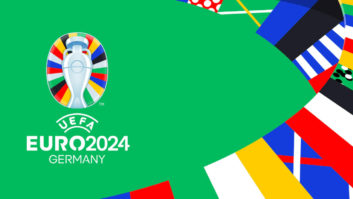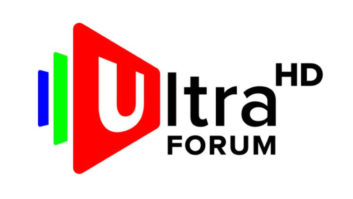When stop-motion animation series Mixmups first appeared on Channel 5’s (now rebranded as 5) Milkshake children’s platform, it broke new ground in representing disabilities in a programme for 3 to 5 year olds. Now, thanks to a collaboration with interactive video provider, Stornaway.io, it’s become even more accessible for viewers with additional needs.
Making its 5 debut earlier this year, Mixmups with Ultra Access goes beyond the traditional offers of subtitles, audio description and British Sign Language, allowing viewers considerably more scope in tailoring the experience to meet their needs.
Explaining the background to the show, creator Rebecca Atkinson begins, “I’m partially deaf and I’m partially sighted, and I’m in the unusual position of being the executive producer and the creator and also a disabled person. So when I was creating Mixmups, I thought very hard about how different kinds of children with different abilities would access the storytelling, and I wondered whether there was anything more that we could do beyond just subtitles and audio description and in-vision sign language.”
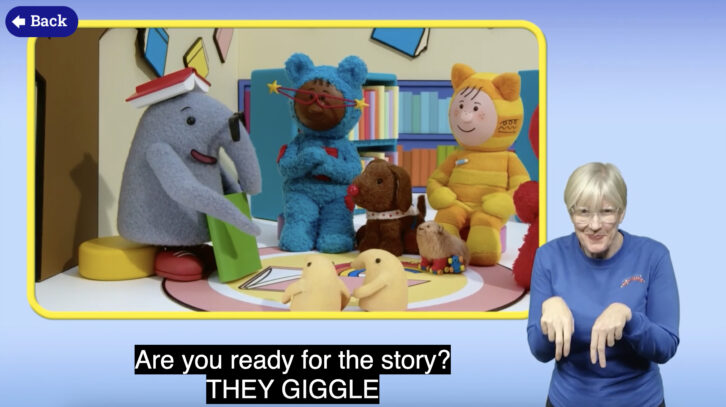
However, the accessibility options available were rather limited in range. Atkinson was sure they could be improved upon. “I knew that there were some problems with those offers,” she says. “Some streaming platforms won’t allow you to have audio description and subtitles at the same time because they think that hearing impairment and sight impairment are binary. There are lots of children who have both and can’t turn off sign language interpreters. So often, signed content lives in dead of night graveyard slots and the viewer can’t choose to turn them on and off like they can with subtitles and audio description.”
While developing Mixmups, she became aware of You vs Wild, the Netflix Originals series in which viewers are able to interact with the programme, making decisions for Bear Grylls as he tries to complete missions in some of the planet’s harshest environments. “[It] had interactive TV technology that allowed you to influence a narrative so you could send the presenter down the river or up the mountain,” Atkinson explains, “and I wondered if this technology could allow for more access features to viewers than was currently being offered by mainstream streaming platforms and terrestrial TV.”
Would it, for example, be possible to turn down the background sound to make the dialogue more accessible? Could the visuals be simplified, removing the background colour to allow the viewer to focus on the character, without having to process additional visual information? Atkinson wondered if Makaton—a language based on symbols and signs—might be used alongside British Sign Language, and if full introductions to the series could be offered in audio description, delivering additional information in a form that met the specific needs of the audience.
“When you watch TV, it’s a sandwich of pictures, special effects, music, dialogue, subtitles, audio description,” says Atkinson, providing a perfect analogy for the make-up of a programme. ”But we’re only serving viewers a completed compressed file. So I wanted to know whether we could separate all those ingredients and then allow customers to go for a menu [and say] ‘I want this. I want that,’ to be assembled and played out on the fly.”
Object Based Media
Enter Stornaway.io, the interactive video solutions provider that is bringing innovative new ideas to audience engagement with its concept of content islands. Launched in 2020, the company was founded by Kate Dimbleby and Ru Howe, following an extensive period of beta testing across the film/TV and gaming industries. Atkinson approached the company and outlined her concept, asking if it would be possible.
Not only was it possible, but the timing was fortuitous, as Kate Dimbleby explains. “I think what’s so lovely about this project is that we actually had created this platform at the same time as Netflix was doing Bandersnatch and experimenting and interacting, just like Rebecca says. But Ru’s background was at the BBC and working with the Natural History Unit, for example. [He was] seeing a lot of money spent on this kind of project, like coding it from scratch, not learning anything, throwing away the code.”
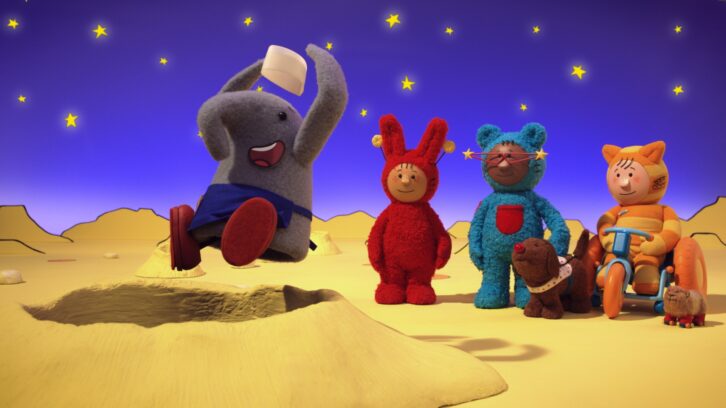
What had been developed was termed Object-Based Media (OBM) by BBC R&D. By separating the media into “objects” of video, audio and layers, each object could be selected—as from the menu in the sandwich analogy—and combined in a multiplicity of ways to enable personalisation and adaptation to suit a viewer’s particular preferences and needs. The innovation may be seen as an example of the technological convergence taking place across the broadcast and gaming industries, among others. Recognising its significance, Ofcom published a report about OBM in 2021. A working group was established to further explore its potential, including the EBU (European Broadcasting Union), Sky, Channel 4, NHK Japan, CBC, Dolby, Fraunhofer and MIT Media Lab, alongside Stornaway, the RNIB, RNID and a number of universities.
The technology seemed to be looking for a reason to exist. It needed a use case. The concept worked, but a creator was required to effectively breathe life into the innovation. With Mixmups, Stornaway was able to deliver a viable, production-ready project.
The numbers are impressive. Chat GPT has calculated that in picking two or more of the 14 variables, there are more than 4,000 permutations. “It’s as personalised as you can get,” says Dimbleby. “With interactive TV, which has been looking at narratives, generally it’s splitting the narratives maybe two or three ways. If Chat GPT’s maths is right, it is telling you there are 4,000 ways for you to build your viewing experience.”
“The reason we created Stornaway as an interactive video platform for creators was to solve this problem,” Dimbleby continues, “And Rebecca came in with all this imagination, a really significant use case that is actually transforming the possibilities of how children and their carers can watch television together, can have their accessibility seen, and they can talk about it. And I think that’s where we hoped that, by enabling the technology for this kind of content, the use cases would come.”
Commissioned by Paramount, the ten MixMups with Ultra Access episodes mark a groundbreaking achievement for OBM. Part-funded by the British Film Institute, they will be archived in recognition of their national significance.
The rest of this article can be read in the May/June issue of TVBEurope, available to download free here

